When Does Homeowner’s Insurance Cover Mold Remediation?
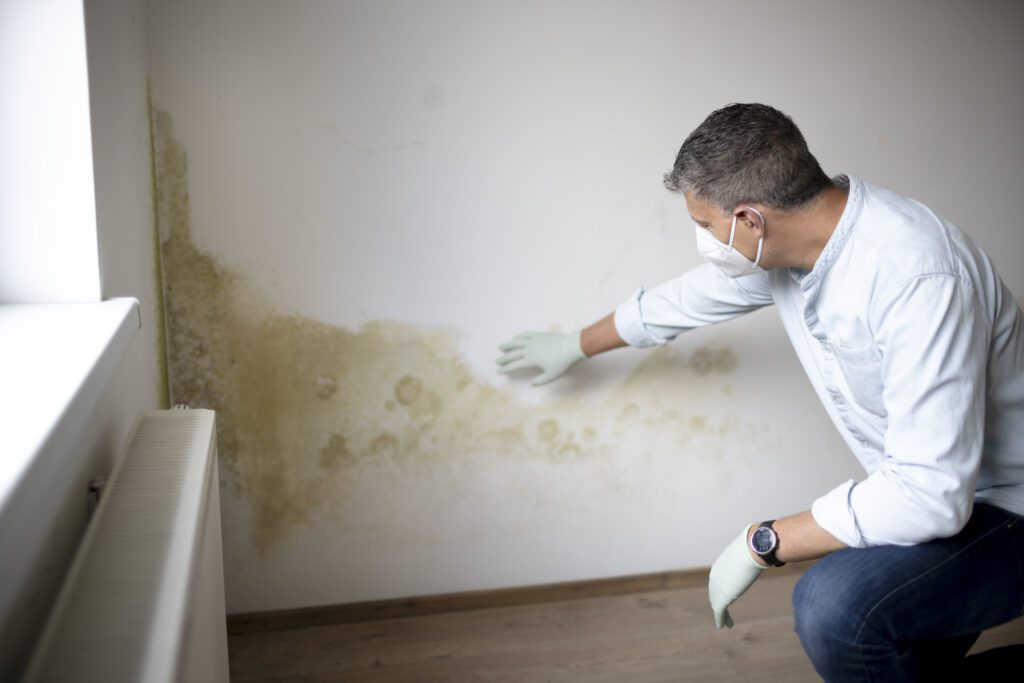
There are few things more difficult than having a problem in your home and not being able to fix it. While smaller issues like appliance breakage or minor repairs can usually be done through tapping into credit cards, more expensive repairs can be challenging to finance. Having a homeowner’s insurance policy for some unexpected repairs can be a big help. However, homeowner insurance policies do not cover all types of damage to a home. It is essential to understand what typical homeowner insurance policies cover and what they do not. While tree damage from storms is one of the most common homeowner claims, water damage and mold remediation are also a primary homeowner insurance policy claim. Water damage is the second most filed homeowner’s insurance claim just behind hail and wind damage. Of all the natural cataclysms, flooding is the number one natural disaster in America. While it may seem simple to remove excess water after a flooding event, water damage can be more difficult to remedy. Water can degrade building materials and cause mold growth. When it comes to water damage and mold remediation, most policies cover some types of water and mold damage. Understanding what is included in your homeowner policy is essential. What is Mold? Mold is a type of fungus that grows in certain conditions, especially ones that have high rates of humidity and moisture. The mold fungus consists of small organisms and is most often found as black, white, orange, green, or purple stains on building materials, clothing, food, trees, and even rock formations. Mold is a serious health risk, and if left unattended, it can make a home uninhabitable. While mold grows naturally in the forest and can be easily identified on rock formations and in moss, when mold grows in a home or confined space, it is dangerous for the body. Mold can cause damage to the lungs and immune system. Any area where water pools or gets trapped, mold can grow. Attics and basements are common areas for storm damage flooding. However, mold can grow in almost any part of a home. In general, mold needs several things to grow, moisture, a lack of air so moisture gets trapped and some kind of food source. The most common food source for mold in a home is building materials and things that are biodegradable such as clothing. In fact, mold can grow on almost biodegradable or rock surface and will readily feed off sheetrock, carpeting, wood, roof tiles, and flooring materials as well as furniture and personal belongings. Mold growth in a home is most commonly found in bathrooms, on roofs, in attics and basements and around bathrooms, kitchens and laundry areas. When Does Homeowner’s Insurance Cover Water and Mold Damage? In most cases, sudden unexpected water damage is covered under your regular homeowner’s insurance policy. This should include both water damage repair and mold remediation. However, there are two caveats to this. If the home floods from rain and is located in a flood plain, it usually will not be covered unless there is a flood insurance policy in place. Without flood insurance, most storm flooding costs for mold remediation fall on the homeowner. If a home has mold growth because of neglect from the homeowner, the claim will probably be denied as well. Each causal factor plays a significant role in whether a home is covered for mold remediation. Homes that suffer from flooding damage caused by neglect from a town or builder may be covered for water damage and mold remediation depending on the circumstances. People who have unexpected burst pipes or a burst hot water tank that causes flooding and mold will likely be covered by a typical homeowner’s insurance policy. Buying flood insurance is the best way to insure for mold remediation from storms. However, many homeowners do not buy flood insurance unless they live near major waterways. With flash flooding from severe storm systems across the country on the rise, it is probably wise for homeowners to invest in flood insurance. While storm damage may be covered under a traditional homeowner’s policy, flood damage insurance is what usually includes mold remediation from storm systems. Flood coverage is separate insurance that is not part of standard home insurance. Types of Scenarios Where Mold Remediation Is Usually Covered by Homeowners Insurance Your hot water heater bursts, flooding your basement, which results in black mold growth on the surrounding walls. You have a home fire, and firefighters use extensive water to extinguish the flames and mold grows in the rooms they hosed down with water. Your dishwasher or washing machine malfunctions and floods your kitchen or washroom, which results in mold growing along the wall. Types of Scenarios Where Mold Remediation Is Often Not Covered by Homeowners Insurance Your bathtub has had a leak in the fixture piping for a long time which you knew about and failed to fix causing a mold infestation. Your basement often has high humidity, and you didn’t purchase a dehumidifier for your basement, so black mold grew on the walls and flooring. A storm causes flooding in your attic from deteriorated roof shingles, and subsequently, mold growth occurs in your home. When a home suffers mold damage caused by a slow water leak, this is usually not part of standard homeowners’ insurance unless it was unknown. Since mold usually takes a day or two to appear, water damage that seeps into a home should always be a priority to remediate. Some of the common causes of slow-growing mold can include, leaky pipes, a cracked seal around a toilet or bathtub, roof tile damage, or a water heater leak. These types of slow leaks may go undetected and cause water to go into hidden pockets of building materials. If this occurs and water remediation is not done immediately, mold will begin to grow. This type of mold growth may be difficult to detect until it has significantly spread behind walls and under flooring. Getting
Mold vs. Mildew
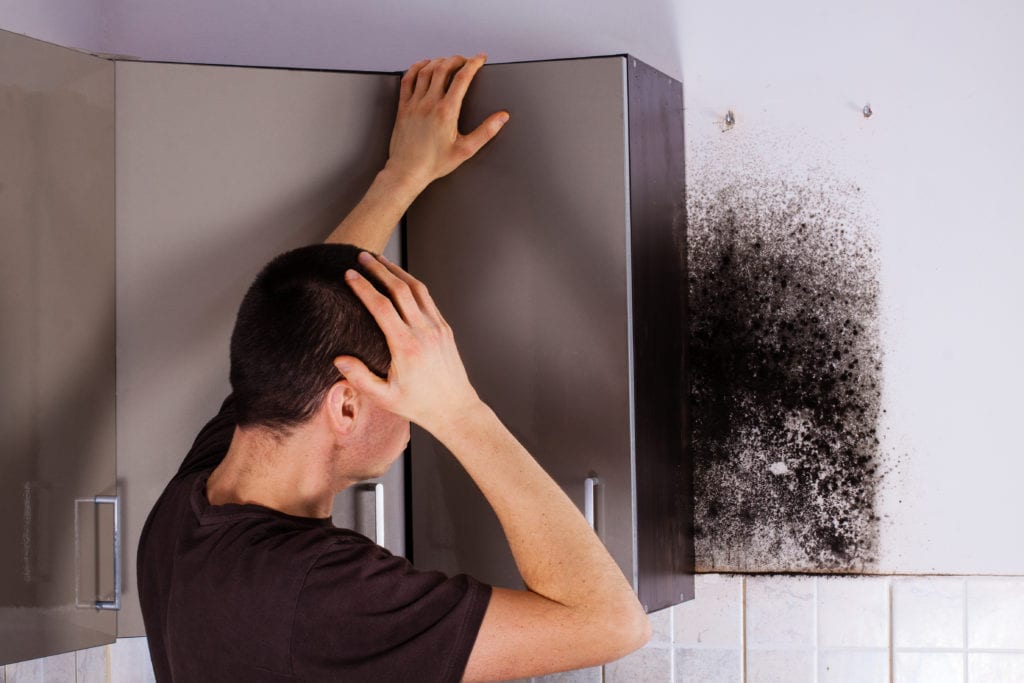
First and foremost, if you have a mold concern in your home, we highly recommend contacting a licensed professional to identify the fungus. Although mold and mildew can look the same to an untrained eye, there are differences. The risk of having mold in your home could be harmful to you and your family’s health. This blog will inform you of the simple characteristics of mold and mildew, to know for sure if what you see in your home must be tested by a licensed professional. Mildew Mildew is typically white, gray or yellow and grows on the surface of moist, warm areas. Mildew also tends to be green or black, and usually grows underneath the surface of anything that has gotten wet. Mildew starts in a shady and moist area. For example, in your home, you could find it, in the bathroom or shower, behind the dishwasher. It is a surface fungus, so it grows on top of surfaces and has a gray or white color, but can later change to yellow, brown or even black. Mildew is not toxic and it can be easily removed by cleaning the infected area. Mold Mold also grows in damp areas, but it is often the result of a more significant infestation that spreads from the surface and begins to grow inside and behind the material, like walls. Mold is usually fuzzy, although it can sometimes be slimy, and could grow in many colors including; black, white, brown, green, blue, yellow, and gray. Mold is usually responsible for many health problems, especially in children. Mold cannot be easily removed like mildew, because it will naturally grow back. This is way, mold should be removed by a licensed trained professional. What’s worse: Mold or Mildew? Mildew is not as troublesome as mold. Mold can create allergies, irritated eyes, asthma, headaches, and in some cases, lung issues could be the result of toxic mold that is breeding within your home. Is mold common in NYC? We have found countless mold problems in pre-war buildings in the Manhattan area, not to say it doesn’t exist in a newer building because it very well can. Remember the cause of mold is moister, that can come from a source. There are many misconceptions about mold; there are those that take it too lightly and others too seriously. Because of these misconceptions, it’s important to get the facts and let licensed professionals test the concerned area to know for sure, then make the proper action. Tips on mold preventions Fixing all leaks Drying damp areas Removing humidity from the air. (For example, using a dehumidifier, cracking a window while taking a shower in bathrooms with no exhaust ventilation; or opening a window in the kitchen while cooking.) If you have any questions or concerns of mold in your home we encourage you to call and schedule a free, no-obligation consultation to look at your problem area.
Mold Allergy Symptoms
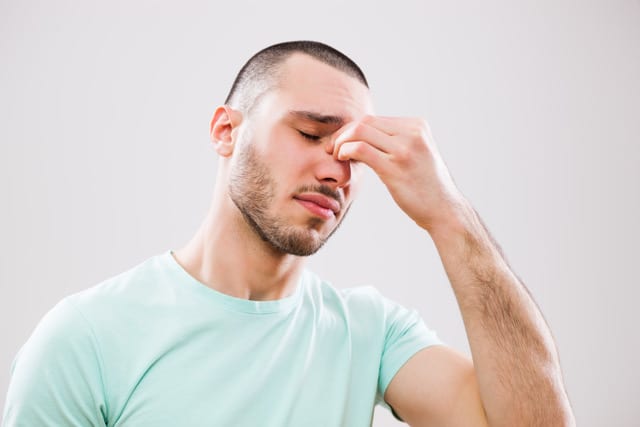
Have you recently come down with what you think is a really bad cold? If your cold symptoms persist for longer than a few days, what you have may not be a cold at all. Was there recently a heavy rainstorm or flood in your area? If so, your home or work area may have been flooded out, requiring emergency responders to drain it. As effective as the response may have been, it may not have been sufficient to remove every trace of mold and bacteria. If you have also noticed some suspicious looking stains on your walls or floors, you may have located the source of your illness. What you are suffering from may well be black mold allergy symptoms. What Are Mold and Bacteria? Mold and bacteria are microscopic organisms that have existed for hundreds of millions of years. Because they are so adaptable to their environment, they are almost impossible to trace until they are in full bloom. And because they are so tiny, they can penetrate into your body with ease. Once inside you, they can cause all manner of irritation and even serious physical harm. Where Can You Find Mold and Bacteria? Mold and bacteria can be found everywhere. You can encounter them outside on fallen leaves or on the side of your home. You can accidentally bring them inside via your clothing or shoes. And you can find plenty of mold inside your home as well. This is particularly true after a heavy rain that may have resulted in flooding. If you are suffering from mold allergy symptoms, chances are good that you already know the cause. Now it’s time for you to take prompt and effective action. The first thing you need to do is identify the precise causes of the mold allergy symptoms you are experiencing. What Are the Symptoms of Mold Allergy? As an answer to the question of what are the symptoms of mold allergy, it may help to have a look at the following list. These are some, but by no means all, of the most common toxic mold allergy symptoms: Serious nasal congestion Nonstop runny nose Chronic sneezing Red or inflamed eyes Itchy throat Coughing Sudden bouts of snoring Wheezing Difficulty breathing What Are the Most Common Risk Factors Associated with Mold? You should also be aware that there are many risk factors that are associated with mold and bacteria. There are over 1,000 different species of bacteria and mold, including some that cause seriously harmful effects. For example, some of the most common black mold allergy symptoms include severe nausea, fainting, dizzy spells, and other neurological symptoms. If accidentally ingested, mold and bacteria can cause serious breathing problems. But these toxic mold allergy symptoms are not only the causes of internal problems. Mold can also penetrate into the skin. Once it does so it can cause serious epidermal issues, such as bleeding, flaking, swelling, and severe rashes. If you can’t stop scratching no matter how much lotion you put on your skin, you need to see a mold allergy specialist immediately. How Can You Be Sure You Are Suffering from a Mold Allergy? If you believe you are suffering from mold allergy symptoms, you will need to get treatment right away. Your best bet is to consult an allergist who can give you a mold allergy test. The purpose of this mold allergy test is to identify which species of mold or bacteria is causing the problem. Once you have named the culprit, you can proceed to eradicate it. An allergist is a medical professional who has been specially trained to identify the symptoms of bacteria and mold allergies. They can give you a battery of special skin and blood tests that can identify the problem, after which they can prescribe a course of effective eradication. You can start by retracing your steps to where you have been over the past few weeks. Most mold and bacteria allergies can be traced back to the home or to your place of work. If you have been to visit a place that has been recently affected by flooding or is chronically damp all year round, this may well have been the place where you first began to notice the symptoms of a mold allergy. What is the Treatment for Mold Allergy Symptoms? Make sure to quickly mop up any spills or leaks in your home. Remove all areas of standing water, no matter how small they may be. Clean your garbage cans regularly. Never let water pool in them. Give the drip pan in your refrigerator a regular cleaning. Clean out your gutters on a regular basis. Make sure that they drain in a direction that leads well away from your home. Keep moisture out of your bathroom as well as the other rooms in your home. Use dehumidifiers or exhaust fans for the best results. Keep your windows open to let the room dry naturally if you have no recourse to these items. If you have already detected mold or bacteria in your home, call in a professional mold remediation service immediately. What is the Safest Course of Mold Allergy Prevention? The safest course of mold allergy prevention is to follow the advice of your physician. They will normally prescribe a course of antihistamines and decongestants in order to help relieve your symptoms. If you know that you are soon going to be in a high risk area for mold and bacteria, it’s a good idea to plan evasive action in advance. For example, while doing yard work, you can wear a dust mask. It’s also wise to take the allergy medications that your doctor has prescribed an hour or so in advance of getting started on your work. After you have finished the job and left the area, you can further safeguard yourself against mold and bacteria by taking a quick shower. This will help to remove any spores that may be lingering on your body.
How to prevent mold growth after water damage?
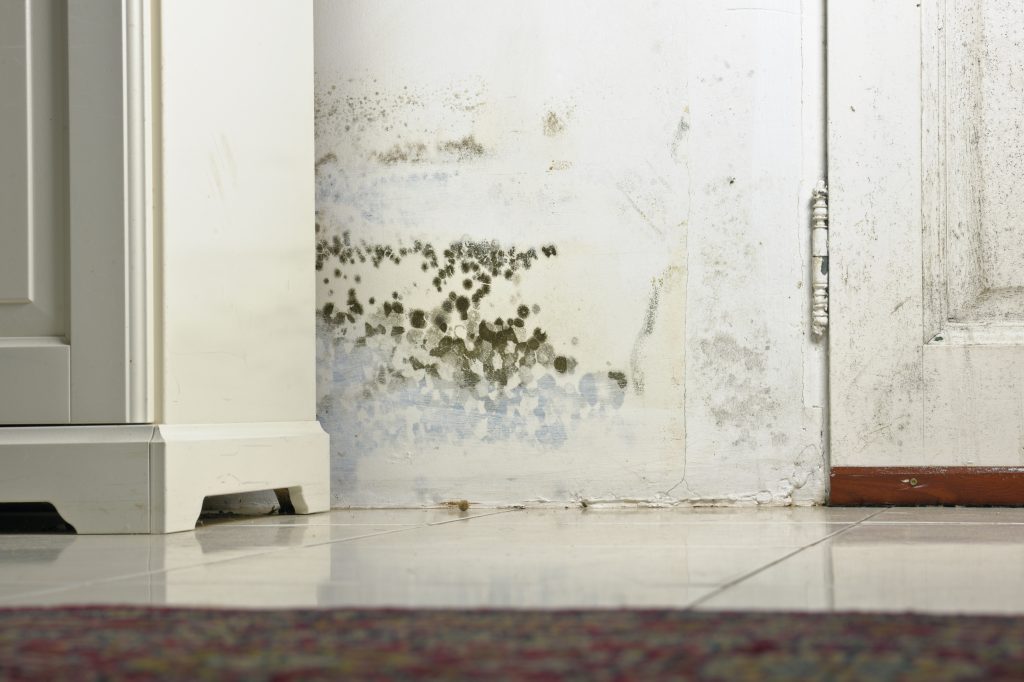
Preventing Mold Growth After Water Damage While preventing floods and certain water damages can be hard due to the uncertainty in calamities, mold can be kept at bay. Mold is a particular type of fungi that grows in damp surfaces especially if the surface provides cellulose base to support its growth. The fungi start to grow within 24 to 48 hours as long as moisture is present. If you fail to dry the moisture, you might begin to notice mold growth on walls, the floor, insulation, ceiling, carpet, and wood. To secure the aesthetic integrity of your home and also your loved one’s health you may want to act quickly and prevent the growth of mold after flood. How to prevent mold after water damage After water damage, it is essential that you act rapidly to discourage mold growth. Before calling in the insurer and any professional cleaners, you may want to browse through your home and save any sensitive documents or gadgets. Once you have separated the most critical items from the rest, you could go ahead and call professional water damage restoration services. Professionals are better equipped and experienced to restore your home to sanity and also take the right measures into preventing mold growth. Here are the steps to take. Call the insurance company If you have been paying for flood insurance, let your insurer know of the happenings in your house. Take photos of the damage before moving any damaged property. This should help in filing for valid claims from the insurer. You will then separate the damaged and untouched items before deciding what to discard and what to restore. Your insurer may bring in professionals to take care of the restoration process depending on the policy terms. Drain all the water From a flood, you expect your home to be immersed in a sea, and simple tools won’t do the job. You could rent a specialized water vacuum or suction pump to remove the water from the house. You are better protected with some protective gear on, if the water is from a flood, a broken sewer, and other toxic sources. Contaminated water carrying chemicals and pathogens is harmful to your health. If you notice that the water is unclean, it would be logical to proceed with a professional cleaner by your side. Remove the damp rugs and carpets Wet rugs and carpets are a potential medium for mold growth. The rugs could take a longer time to dry off and could use some separate washing and draining to restore their conditions. It would be helpful to have the carpets steam cleaned to remove any contaminants soaked in the rugs and dry them in the sunlight to prevent mold infestations. If you decide to let the carpets stay in the house soaked in water, this may encourage mold growth that spreads underneath to the floor and other areas in the house. Remove the wet furniture Furniture can also serve as an excellent medium for mold infestation. Once all the water has been pumped out, also drag out all the furniture for some cleaning and drying. You could ask for manpower to help with the carrying of heavy and wet furniture. Let the furnishings dry completely before bringing them back into the house. Dry the wet areas in the house By now, almost every wet item is out in the sun drying, but your house still suffers from some wet spots. The draining step only draws the water out but doesn’t dry the surfaces. Even concrete soaks in moisture which later encourages mold growth. You could use dry towels and mops to soak in the water that the pump or vacuum couldn’t clear. Professional cleaners have industrial-sized fans that propel off all the excess moisture and creates an environment for the surfaces to dry quickly. The results should achieve drying walls and floors. Maintain the surfaces dry High humidity creates an excellent environment for mold growth. Your house’s humidity should be maintained at low levels to discourage mold growth. A dehumidifier can help maintain these conditions. If the weather is temperate and sunny, you could open all the windows and entrances to allow in adequate air that should support the right humidity levels. All these stipulations ensure that your home remains dry after draining the water. Disinfect all surfaces Be sure not to bring the wet conditions into the house when disinfecting the areas. You could use mold growth preventing cleaning solutions, bleach and detergent to make a solution that will clear any bacteria or possible mold growth. It could take a few days or weeks to get back things back to normal and ensure that mold won’t grow. Monitor Even in the event of all the preventive measures that you might have undertaken, mold can still grow. Here’s where the monitoring process comes in. Mold is evident through odor; a musty odor like that of dirty socks. Some types of mold are visible while some stay hidden behind walls, beneath sinks and may take sometime before a homeowner notices mold growth. There could be black or green streaks that appear along walls and ceilings that could indicate mold growth. The homeowner should be on the constant lookout for mold growth signs. Some manifest through unexplained health complications such as coughing, a runny nose, itchy skin, and watery eyes. If you start noticing these clear signs of mold growth, you may want to call in a professional mold remediation expert to help with the inspection and address the issue. After an inspection, if mold presence is positive, the expert should embark on mold removal thoroughly to prevent re-infestation. Can you dry the water damage yourself? Depending on the amount of water in your house, drying the house can prove to be a daunting task if the flood caused huge damages. Huge masses of water may cause detrimental damages that require the help of professionals to restore the home to order. If the water damage isn’t
How Do You Know If Mold Is Making You Sick?

How Do You Know If Mold Is Making You Sick? Getting sick is awful, and if you’re like most people, you do everything in your power to heal yourself when you’re ill. Eliminating the cause of your illness is the best cure, but unfortunately, it’s not always obvious what’s making you feel under the weather. Fungal infestations cause serious health problems and make existing ailments worse — Mold remediation could prove critical to your efforts to get better. Here’s why. Mold Basics Mold is a type of fungus that grows in colonies, or groups comprising thousands or millions of individual organisms. Like mushrooms and other fungi, mold reproduces by releasing spores. These tiny particles are light enough to float on a gentle breeze, and when they land in favorable conditions, the mold growth cycle starts all over again. Common Mold Health Risk Issues Most health problems related to mold growths have to do with inhalation. In addition to filling your house, apartment or office with a foul, sour smell, spores can enter your respiratory tract. Once there, they can cause various mold exposure symptoms, such as Breathing difficulties Asthma and other lasting illnesses Increased problems with existing respiratory ailments Irritated, inflamed eye, nose, lung or throat tissue Persistent allergies Skin irritation Coughs and colds that don’t seem to clear up An increased likelihood of opportunistic infections, especially if your immune system is already compromised. Children and the elderly often prove more susceptible to these hazards. This makes mold removal imperative for families. How Do I Know If Mold in My Apartment Is Making Me Sick? Mold isn’t always easy to spot. Since all it needs to thrive is a surface and a small amount of moisture, it can crop up on walls, furniture, clothing and everything else that you own. It’s commonly encountered in crawl spaces, basements, bathrooms, and other damp areas. Further confusing the issue, visible mold colonies may take on a variety of visual characteristics. Some growths look like black or white spots, while others produce rusty appearances and discoloration. Lots of mold infestations follow closely on the heels of floods and other water damage events that might make it even harder to tell what’s going on. The only sure way to tell is to perform a thorough mold inspection that relies on advanced technology to sample moisture, air quality, and other factors. What Can I Do About Mold in Manhattan? If you care about your well-being, then living in mold-filled conditions isn’t an option. Mold remediation is vital to getting healthy again, so be proactive. Talk to an expert about dealing with mold in your home or workplace soon.
How Do You Know If Mold Is Making You Sick?
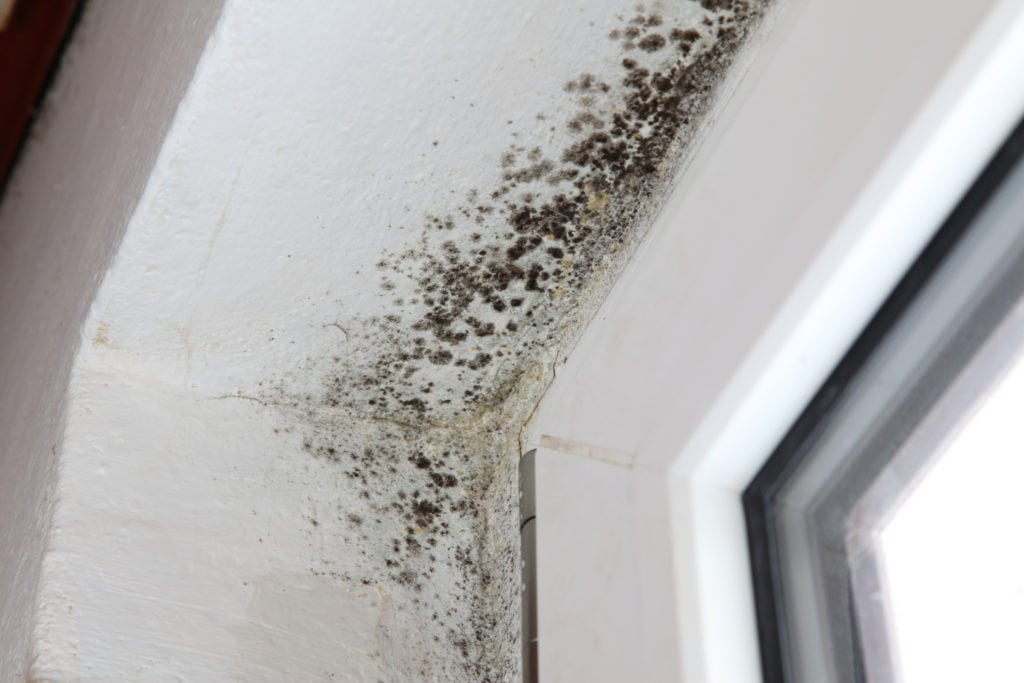
Getting sick is awful, and if you’re like most people, you do everything in your power to heal yourself when you’re ill. Eliminating the cause of your illness is the best cure, but unfortunately, it’s not always obvious what’s making you feel under the weather. Fungal infestations cause serious health problems and make existing ailments worse — Mold remediation could prove critical to your efforts to get better. Here’s why. Mold Basics Mold is a type of fungus that grows in colonies, or groups comprising thousands or millions of individual organisms. Like mushrooms and other fungi, mold reproduces by releasing spores. These tiny particles are light enough to float on a gentle breeze, and when they land in favorable conditions, the mold growth cycle starts all over again. Common Mold Health Risk Issues Most health problems related to mold growths have to do with inhalation. In addition to filling your house, apartment or office with a foul, sour smell, spores can enter your respiratory tract. Once there, they can cause various mold exposure symptoms, such as Breathing difficulties, Asthma and other lasting illnesses, Increased problems with existing respiratory ailments, Irritated, inflamed eye, nose, lung or throat tissue, Persistent allergies, Skin irritation, Coughs and colds that just don’t seem to clear up, and An increased likelihood of opportunistic infections, especially if your immune system is already compromised. Children and the elderly often prove more susceptible to these hazards. This makes mold removal imperative for families. How Do I Know If Mold in My Apartment Is Making Me Sick? Mold isn’t always easy to spot. Since all it needs to thrive is a surface and a small amount of moisture, it can crop up on walls, furniture, clothing and everything else that you own. It’s commonly encountered in crawl spaces, basements, bathrooms and other damp areas. Further confusing the issue, visible mold colonies may take on a variety of visual characteristics. Some growths look like black or white spots, while others produce rusty appearances and discoloration. Lots of mold infestations follow closely on the heels of floods and other water damage events that might make it even harder to tell what’s going on. The only sure way to tell is to perform a thorough mold inspection that relies on advanced technology to sample moisture, air quality and other factors. What Can I Do About Mold in Manhattan? If you care about your well-being, then living in mold-filled conditions isn’t an option. Mold remediation is vital to getting healthy again, so be proactive. Talk to an expert about dealing with mold in your home or workplace soon
Common cause of mold in the home
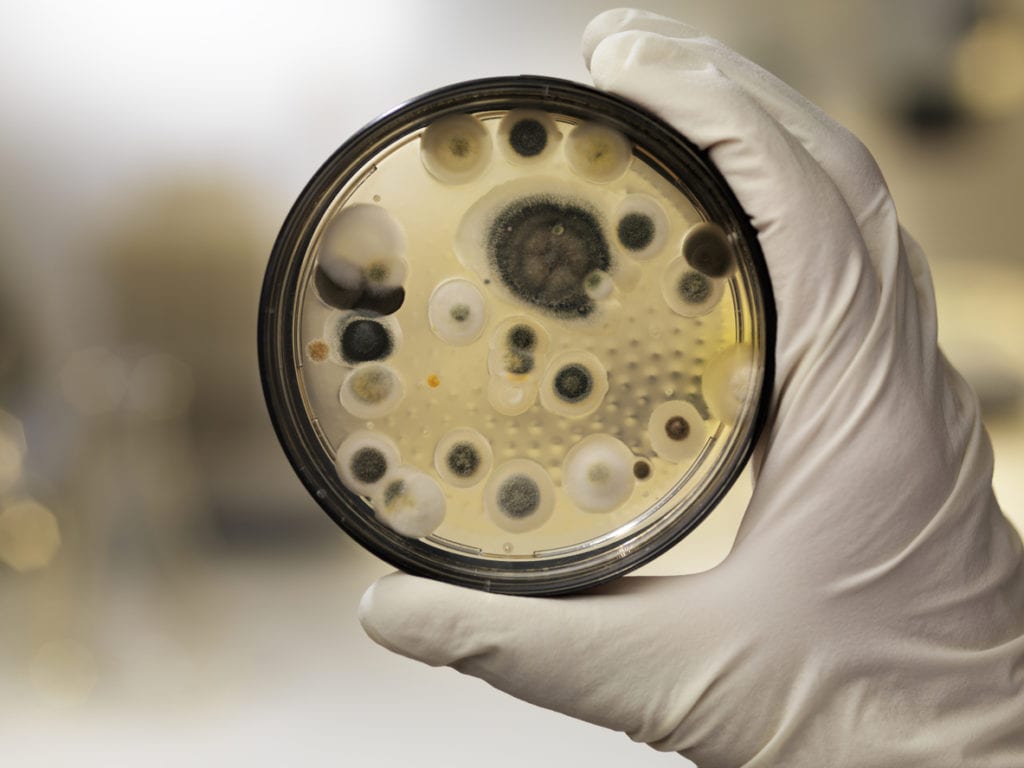
Household mold is an all too common scourge that reportedly afflicts fully 100 percent of the houses in the United States today. The prime causes of mold are not a secret. Mold spores become airborne and easily get into a house. A combination of moisture, oxygen, warmth, darkness, and something for them to feed on is necessary for mold to flourish, spread, and multiply. Mold needs 24-48 hours in these optimal conditions for it to grow and appear. What are the Most Common Types of Mold? There are 12 most common types of mold that afflict households. They all fall into three categories. They could be: Allergenic – allergy causing with such side affects as asthma attacks Toxigenic – producing toxic substances that can cause fatal health conditions Pathogenic – health problem aggravating for those who already suffer from a particular acute illness The 12 most common molds found in houses today (in no particular order) are as follows: 1. Acremonium This toxic mold begins as a moist, small mold that becomes powdery and grey, pink, white, or orange colored. It grows within home systems such as drain pans, cooling coils, humidifiers, and window sealants. The risks from acremonium are perilous, and can cause immune system diseases and bone marrow diseases. It can even also impede proper brain function. 2. Aspergillus An allergy causing mold that makes thick layers of it. The risks may be minor, though there can also be serious reactions including inflamed lungs and respiratory infections. It can cause a killing carcinogen known as aflatoxins to appear. 3. Alternaria This allergenic mold is velvety in appearance with brown or dark green hairs. It appears in bathtubs, showers, and under sinks. Generally warning of water damage, such mold spreads rapidly and causes asthma symptoms as well as hives and watery, itchy eyes. 4. Aureobasidium An allergenic mold, it is typically black, brown, or pink, turning a darker brown as it ages. This mold is commonly found on wooden or painted surfaces or behind wallpaper. Prolonged exposure leads to nail, skin, and eye infections. 5. Cladosporium An allergenic mold, this has been called brown or olive green colored mold that bears a suede type of texture. You find it commonly on fabrics, carpet, wooden floors, upholstery, and cabinets. It causes respiratory problems and other breathing issues if left untreated. 6. Chaetomium A cotton-like looking texture of mold that starts life out in white, this mold is known to darken over time, eventually becoming from brown to black colored. Water damaged buildings and roofs, pipes, drywall, and basements are favorite homes for this mold. It gives off a musty smell and causes nail and skin infections. 7. Fusarium This mold is both allergenic causing and toxigenic. It can be red, pink, or white. You find Fusarium in wallpaper, carpets, and fabrics. It grows and spreads quickly on foods. The risks from its presence are many, including allergenic reactions and skin infections. Prolonged exposure leads to dangerous conditions such as brain abscess and bone infections. The toxins can even afflict the nervous system and cause both internal bleeding and possibly hemorrhaging. 8. Penicillium The basis of all antibiotics is also an allergenic mold. It looks green or blue and velvet like. You find this dangerous form of Penicilin in water-damaged structures including wallpaper, ducts, mattresses, and carpets. It spreads rapidly if not treated quickly. The fast traveling spores lead to respiratory issues, asthma, chronic sinusitis, and pulmonary inflammation. 9. Mucor This allergenic mold is gray or white, and it thickly and quickly grows and spreads. It lives near HVAC ducts, A/C units, and damp carpets afflicted by condensation. It causes flu types of symptoms and asthma, and can also lead to a fungus infection with potential to damage nose, eyes, lungs, sinuses, and even your brain. 10. Stachybotrys The toxigenic mold is slimy black or dark green. It thrives in places that are humid, wet, and damp over weeks, and especially in wicker, cardboard, and wood. Your risks from Stachybotrys include serious health complications. These include fatigue, breathing, sinusitis, and even depression. There can also be pulmonary bleeding and neurological issues in infants and children exposed to it. 11. Trichoderma Allergenic mold that appears in green or white wool looking patches, there are five different sub-species of this mold. It thrives in wet wallpaper, fabrics, carpets, and moister areas like A/C filters and ducts. The risks are many but mostly non-pathogenic. They can include production of mycotoxins causing allergic reactions, sinusitis, and other related health issues. 12. Ulocladium A black mold, it is commonly found in bathrooms, kitchens, windows, and basements, all heavily water damaged or thoroughly affected by condensation. The risks include skin infections, hay fever, problems breathing, and asthma-like symptoms. Where Does Mold Come From? Mold comes from everywhere unfortunately. It can grow in any element if it has the key necessary moisture. Mold reproduces easily in spores that are easily airborne by air currents such as those common to air conditioning. When the mold spores find a wet surface that is suitable to live on, they start growing straight away and often spread rapidly. How Can You Prevent Mold? Preventing mold is a matter of controlling moisture in a home or area. This means that you must find moisture problem areas and address them quickly. Wet places need to be dried straight away. Sufficient ventilation will help to keep excessive moisture down. You can also seek out mold-resistant products with which to furnish your house. You can install a dehumidifier to control humidity levels inside. Direct water out of and away from your house by keeping roof gutters cleaned and repaired. What Can You Do if You Have Mold? The best thing to do if you find a dangerous level of mold in your home is to call a professional. Professional mold removal is complicated for several reasons. Mold is very difficult to identify and even more perilous to be near for extended periods of time. Professional
What is Black Mold?
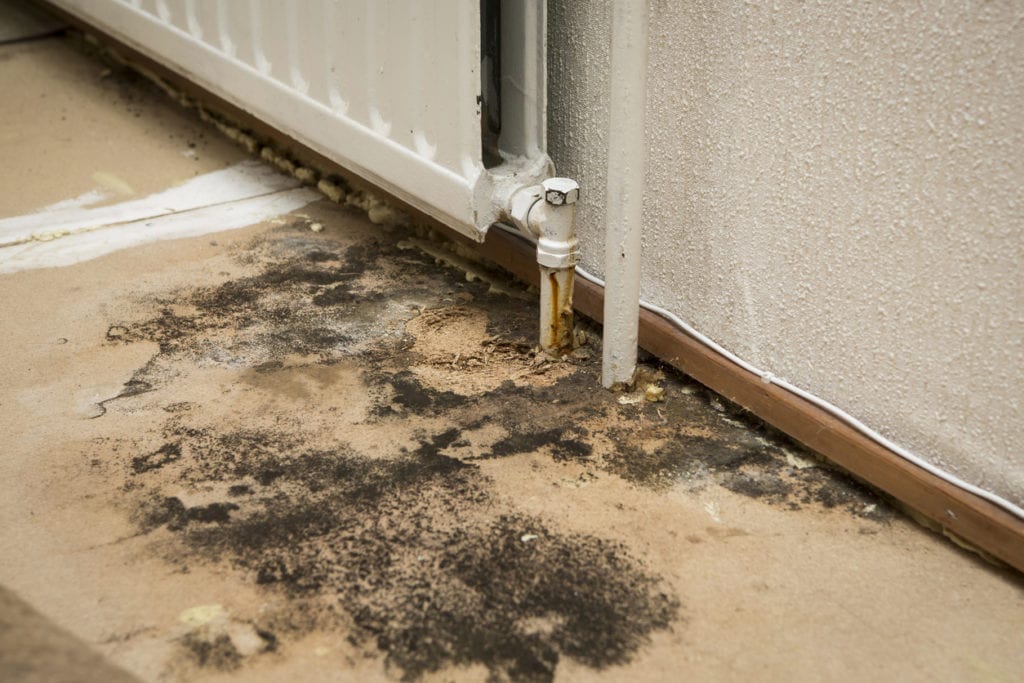
Besides being shelter from all types of weather conditions, your home is synonymous with comfort, safety, and joy. Black mold, however, is a silent destroyer that causes damage to a house and its inhabitants before you’re even aware that you have an issue. This post will cover these four common black mold topics: Black mold exposure Black mold symptoms Black mold removal Mold clean up How To Tell If You Have Black Mold and Is Black Mold Dangerous? Mold and its close cousin mildew live in moist areas. Mold spores are tiny organisms that enter your home via the air, which makes getting rid of black mold complicated. There are many varieties of mold, but black mold is the kind that does the most harm to humans. How to tell if you have black mold is one of the most frequently asked questions that we get from our clients. Black mold in house bathrooms, kitchens, and laundry rooms are common. Pictures of black mold often show a swath of greenish-black mold that has a slick sheen to it. Toxic black mold also has a distinctive musty odor and can lead to black mold poisoning. Our professional mold cleanup, mold removal, and mold restoration experts can help you to identify if you have black mold vs mildew. Wondering how to get rid of black mold? The first step is assessing the extent of mold damage. Contact us today for a free consultation to remove black mold in house areas. What Are Black Mold Poisoning Symptoms? If you have young children or elderly relatives in your care, you’re likely asking yourself, “Is black mold dangerous?” Depending on your level of contact, black mold exposure is a health hazard. Symptoms of black mold exposure are allergies that impact your upper respiratory functions. During early black mold exposure, you might develop black mold symptoms such as a runny nose, or your child might start sneezing. Black mold symptoms become more serious if the problem remains unchecked. Those who have weak immune systems and succumb to black mold poisoning often develop asthma, respiratory infections, and breathing difficulties. Employing a black mold removal company to perform a professional mold cleanup is highly recommended in these cases. Other black mold poisoning symptoms include skin redness, rashes, and unexplained headaches. When you call a professional to get rid of black mold, you get an accurate diagnosis of your home’s problem. This helps when you see your doctor for treatment for side effects of black mold. Contact a house mold removal firm that knows how to test for black mold, what kills black mold, and how to clean up mold. What Is Mold Remediation Versus Home Mold Removal? How to remove mold is the second most common question that we get as a leading mold clean up company. After mold abatement companies like ours help you to answer the black mold vs mildew question, we generate mold damage assessments and mold treatment plans of action that are especially suited for your situation. Even the colonies of black mold in bathroom areas are spawned by naturally occurring mold spores. Our house mold removal technicians apply methods to bring the amount of mold spores down to normal levels, which is called mold remediation. Our black mold removal techniques include mold containment and cleaning black mold in bathroom spaces with fungicides. To learn more about our black mold removal procedures and the mold removal cost for your home, give us a call today. How to Get Rid of Black Mold The Right Way If pictures say a thousand words, pictures of black mold describe a home that is unhealthy and unpleasant. Once you know what kills black mold, you can employ numerous home mold removal remedies for getting rid of black mold if the mold is limited in scope. If the toxic black mold covers more than 10 feet of space, it’s best to call a professional to get rid of black mold. By calling us for a free mold removal consultation, you’ll get in-depth answers to questions like what is mold remediation, how to clean up mold, and how to remove mold. You can also find out more about the mold removal cost for your home. Conclusion The side effects of black mold on your family’s health range in severity, and mold’s unsightly staining and unpleasant smell can lead to lower home values. If you have symptoms of black mold exposure, it’s best to call a professional like us for comprehensive mold treatment, mold remediation, and mold restoration. We know how to test for black mold so that you’re never left guessing about your family’s well being. Call us today about your mold abatement and mold remediation needs.
